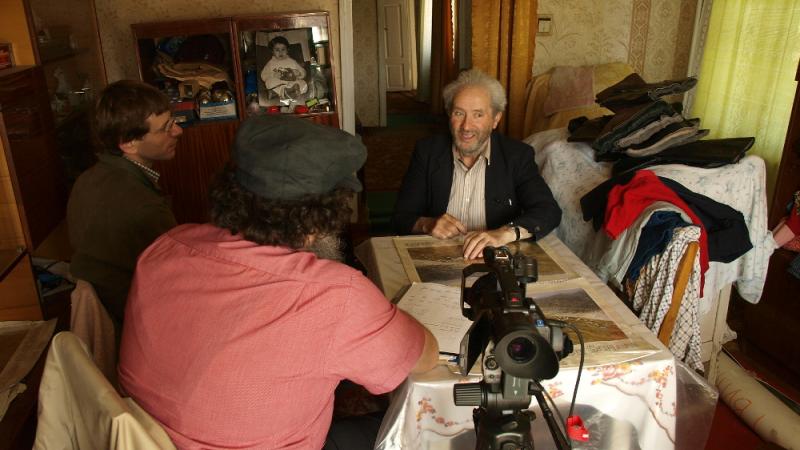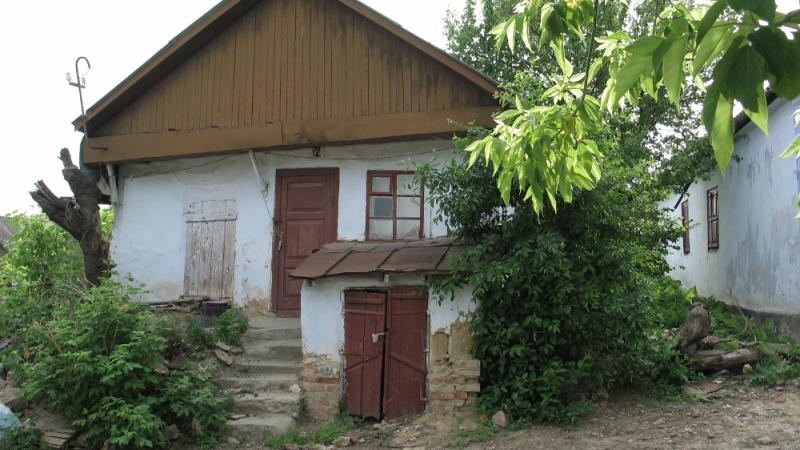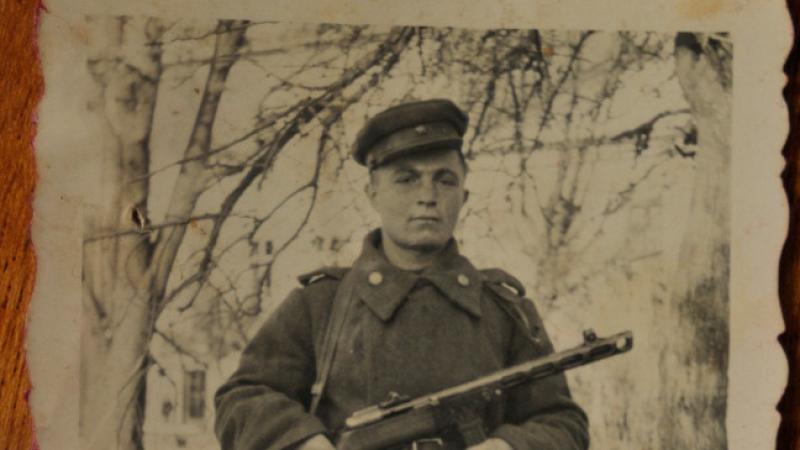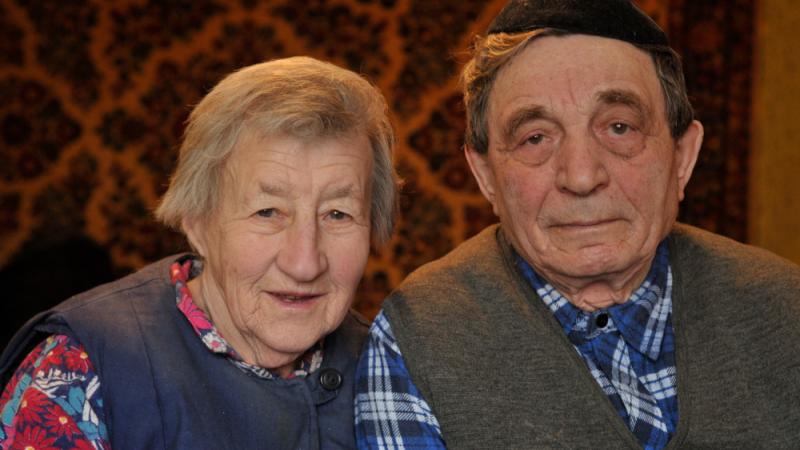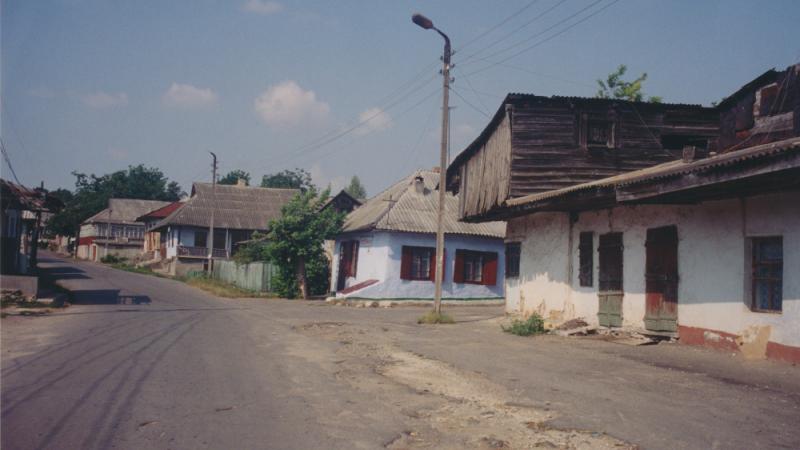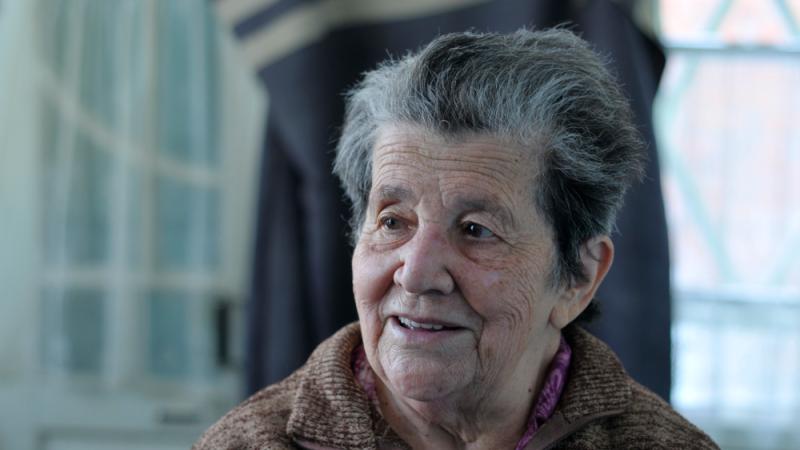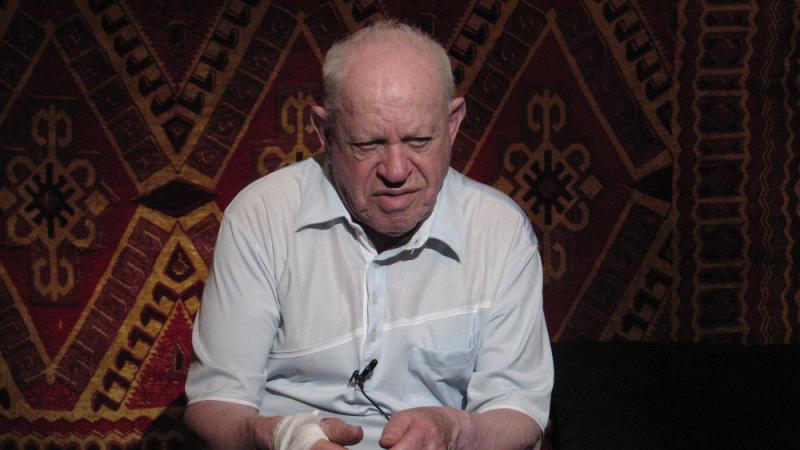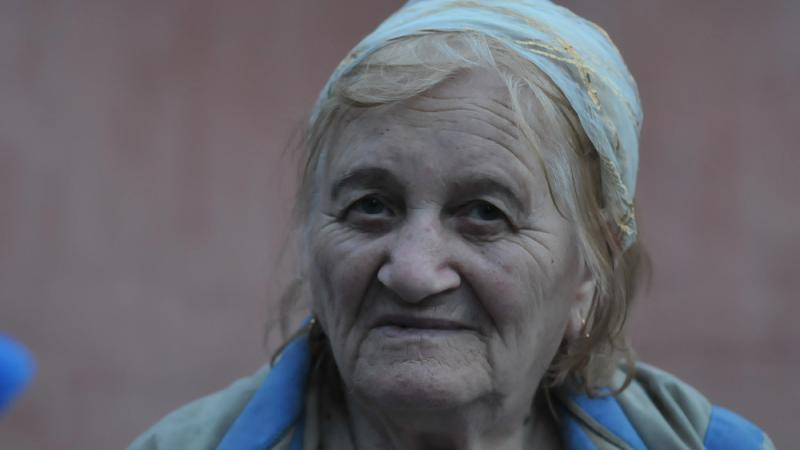Voices from the Shtetl: The Yiddish Memories Project
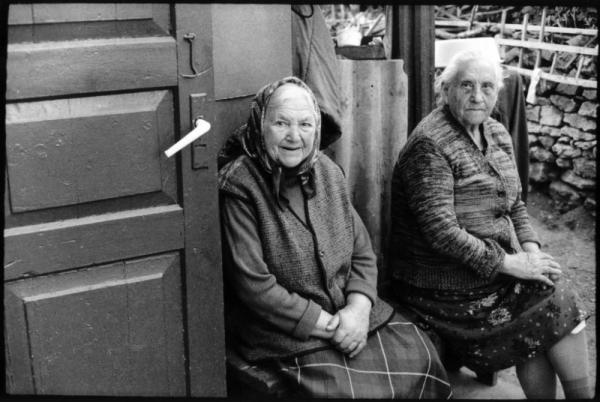
Sonia Reznik and Liza Petrunenko in Tomashpil, Ukraine 2003.
Photo by Pawel Figurski. Courtesy of Jeffrey Veidlinger, In the Shadow of the Shtetl: Small-Town Jewish Life in Soviet Ukraine (Bloomington: Indiana University Press, 2013)

Sonia Reznik and Liza Petrunenko in Tomashpil, Ukraine 2003.
Photo by Pawel Figurski. Courtesy of Jeffrey Veidlinger, In the Shadow of the Shtetl: Small-Town Jewish Life in Soviet Ukraine (Bloomington: Indiana University Press, 2013)
Over the past thousand years, Yiddish has survived the effects of war, persecution, and cultural assimilation and continues to be spoken by some two million Jews around the world. The Yiddish language represents an amalgam of Hebrew, Aramaic, and Slavic elements fused onto a Germanic structure. Words that have entered the English language such as “chutzpah,” “shlep,” and “schmooze” have their origins in Yiddish. Since the Second World War, the number of Yiddish speakers has fallen dramatically. And yet, many would be surprised to learn that Yiddish is still spoken in parts of Eastern Europe, where a few isolated communities survived the Holocaust that destroyed what was once a vibrant Jewish culture.
Beginning in 2002, scholars, librarians, and archivists at Indiana University, Bloomington, embarked on a systematic effort to document the Yiddish language as it is spoken in its Eastern European heartland. Their project is called The Archives of Historical and Ethnographic Yiddish Memories or AHEYM, a word which means "homeward" in Yiddish. Over a ten-year period--and with support from two NEH grants--the project team, led by linguist Dov-Ber Kerler and historian Jeffrey Veidlinger, conducted interviews with some 380 elderly Yiddish speakers in Ukraine, Moldova, Romania, Hungary, and Slovakia. Particular attention was given to the denizens of the shtetls--the small towns in which most East European Jews had lived in the 19th and early 20th centuries, before millions responded to the call of the metropolis, departed for America and other lands, or were murdered by the Nazi Germans and their collaborators during the Holocaust. It was in these small, tightly knit communities that many of the defining features of Yiddish culture took shape--its traditional cuisine, music, art, theater, architecture, and religious practices.
The interviews conducted in the course the AHEYM project provide a window into the world of the shtetl as it once existed. The project team has cataloged, annotated, and translated into English nearly 800 hours of videotaped interviews. The recordings are preserved at Indiana University’s Archives of Traditional Music and form part of the EVIA Digital Archive Project.
In a series of wide-ranging interviews, the informants--almost all of whom lived through World War II and the Holocaust--expound on various aspects of their lives: family structure, religious observances, community organization, cultural activities, education, health, recreation, foodways, and folklore. The contrast between the sacred and the secular is particularly striking in the interview of Semyon Krotsh who performs two songs from his youth: one a traditional piece sung during Passover and the other a raucous drinking song. Not surprisingly, many interviews include harrowing tales of survival; for example, Penia Golfeld recounts his experiences in the Pechora concentration camp in Ukraine (video below). Also telling are first-hand accounts of life under Communism: in his interview, Aba Kaviner describes state-sponsored anti-Semitism during the Stalin era. And yet life goes on, even in the midst of persecution, as is apparent in David Geller’s story of love at first sight.
These interviews, in all their variety, offer a unique perspective on Jewish culture, which has thrived despite war and genocide and for which the Yiddish language was once the foundation. With such resources at hand, scholars are able to examine a history of pre-war Jewish life in Eastern Europe that might otherwise be lost.
Already, the project has led to new research. Last year, project director Jeffrey Veidlinger, who is now at University of Michigan, published In the Shadow of the Shtetl: Small-Town Jewish Life in Soviet Ukraine, a work based heavily on the AHEYM interviews. The Digital Library Project at Indiana University is working now to make this rich body of material available to scholars from around the world, as well as to the general public.
To view selected video clips of the interviews with Yiddish speakers, go to the AHEYM Web site. A documentary film on the AHEYM project is also underway.
